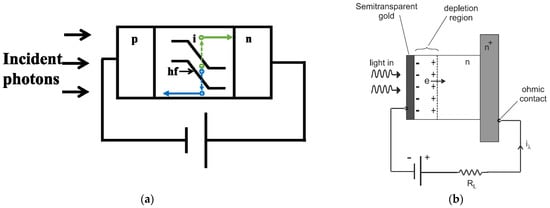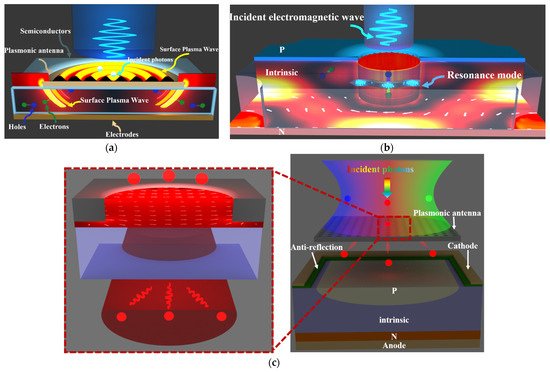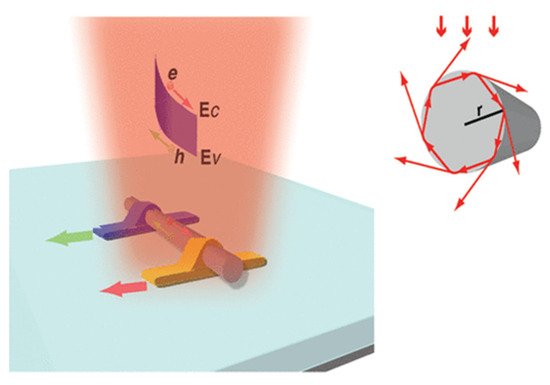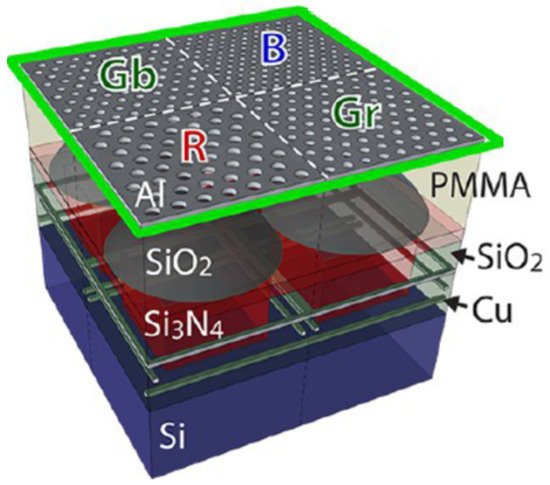You're using an outdated browser. Please upgrade to a modern browser for the best experience.

Submitted Successfully!
Thank you for your contribution! You can also upload a video entry or images related to this topic.
For video creation, please contact our Academic Video Service.
Video Upload Options
We provide professional Academic Video Service to translate complex research into visually appealing presentations. Would you like to try it?
Cite
If you have any further questions, please contact Encyclopedia Editorial Office.
Yi, F. Metasurface Photodetectors. Encyclopedia. Available online: https://encyclopedia.pub/entry/18816 (accessed on 18 December 2025).
Yi F. Metasurface Photodetectors. Encyclopedia. Available at: https://encyclopedia.pub/entry/18816. Accessed December 18, 2025.
Yi, Fei. "Metasurface Photodetectors" Encyclopedia, https://encyclopedia.pub/entry/18816 (accessed December 18, 2025).
Yi, F. (2022, January 26). Metasurface Photodetectors. In Encyclopedia. https://encyclopedia.pub/entry/18816
Yi, Fei. "Metasurface Photodetectors." Encyclopedia. Web. 26 January, 2022.
Copy Citation
Photodetectors are the essential building blocks of a wide range of optical systems. Typical photodetectors only convert the intensity of light electrical output signals, leaving other electromagnetic parameters, such as the frequencies, phases, and polarization states unresolved.
metasurface
photodetector
multifunctional photodetection
1. Introduction
Silicon PIN photodiode (Figure 1a), based on the internal photoelectric effect, is the most commonly used photon detector, in which the semiconductors absorb the incident photons, and the photo-excited electron-hole pairs in the depletion region are separated by the built-in field and collected by the electrodes. However, the low responsivity in the near-infrared (NIR) spectral band restricts its application in light detection and ranging, as well as optical communication.


Figure 1. Typical photon detectors: (a) PIN photodiode, (b) Schottky photodiode, (c) quantum well photodetector, (d) graphene photodetector, and (e) colloidal quantum dots photodetector.
Schottky photodiodes (Figure 1b) utilize a metal-semiconductor junction with metal-n − n+ or metal-n configuration to separate and collect the photogenerated charge carriers. Incident photons, with energy greater than the Schottky barrier, pass through a semitransparent metallic layer (often gold) and are absorbed in the depletion region in the n-type semiconductor. Charge carriers generated within the depletion region are efficiently swept out by the built-in electric field, giving rise to a photocurrent. The low responsivity of Schottky photodiodes is due to reflection and absorption of light in the metal layer, as well as poor electron injection efficiency [1].
Quantum well infrared photodetector (QWIP) (Figure 1c) is a heterojunction based photodetector, whose energy barrier Eg is determined by the thickness of each layer. However, the intersubband absorption (ISB) in QWIP, at normal incident, is forbidden by polarization selection rule: only the light polarized in the growth direction of the quantum well can cause ISB transitions. Thus, a normal incidence geometry (i.e., light incident normal to the wafer and along the growth direction) is not suitable for photodetection. Thus, various grating structures have been used as the coupler to provide a nonzero polarization component in the epitaxial growth direction [2].
Graphene is also an attractive photodetector material due to its zero-bandgap property (Figure 1d), broadband absorption, and ultrafast photoelectric response. However, graphene photodetector suffers from the weak optical absorption of 2.3% [3]. This motivates the use of on-chip nanostructures to enhance the light matter interaction in graphene photodetectors.
Colloidal quantum dots (CQDs) (Figure 1e) have emerged as a promising nanomaterial for making low-cost, flexible photodetectors with spectral coverage tunable through the quantum confinement effect using complementary metal-oxide-semi-conductor (CMOS) compatible fabrication process. However, CQD photodetectors face the dilemma of low responsivity, resulting from the much thinner active region than the absorption length. Near-field enhancement, using plasmonic nanostructures, is therefore explored as an effective route to increase the light absorption by scattering.
2. Manipulation of Light by Optical Antennas
Optical antennas are electromagnetic antennas in the optical frequencies. The sizes of optical antennas are usually smaller than the wavelength of light. Thus, optical antennas are subwavelength nanostructures, and the arrays of optical antennas are metasurfaces. Due to the capability of manipulating light at the subwavelength scale, optical antennas and metasurfaces are expected to play significant roles in photodetection by enhancing the light-matter interaction [4] and resolving electromagnetic parameters, such as frequencies and polarization states [5].
The functions of optical antennas in photodetection can be categorized into three schemes [6].
- (a)
-
Near field scattering: in this scheme, optical antennas confine the incident light in the vicinity of the nanostructures, enhancing the light-matter interaction and promoting the transduction of photons into electric signals (Figure 2a). Mechanisms for near field scattering include surface plasmon resonance (SPR) and localized surface plasmon resonance (LSPR). SPRs arise from the coupling of electromagnetic fields to the oscillation of the electron plasma in metals, while LSPRs are non-propagating excitations of the conduction electrons in metallic nanostructures coupled to the electromagnetic fields [7].
 Figure 2. Different functions of optical antennas in photodetection. (a) Near-field scattering, causing locally increased absorption, (b) coupling the incident light into resonant modes and injecting the photo-excited carriers into the semiconductor, and (c) far-field scattering, leading to a prolonged optical path (collect and re-emit photons) [6].
Figure 2. Different functions of optical antennas in photodetection. (a) Near-field scattering, causing locally increased absorption, (b) coupling the incident light into resonant modes and injecting the photo-excited carriers into the semiconductor, and (c) far-field scattering, leading to a prolonged optical path (collect and re-emit photons) [6].
The near field scattering of optical antennas was first applied in near-field optical microscopy because of the large scattering cross-section of plasmonic nanostructures [8]. As shown by Figure 3, by embedding the nanometer-scale germanium photodetector into the gap region of half-wave Hertz dipole antenna, the incident light was concentrated by the dipole antenna into the gap region, where the optical energy was transduced by the photodetector into electric signals [9]. The responsivity improvement in this configuration is attributed to the enhanced interaction between the localized fields and the semiconductor material [10].

Figure 3. A nanometer-scale germanium photodetector with metal-semiconductor-metal (MSM) configuration is embedded into the gap region of half-wave Hertz dipole antenna. The dipole antenna was used to collect light from a large area and concentrate it into the small subwavelength region of the germanium photodetector [9].
-
(b) Resonant detection: in this scheme, the incident light is coupled to the resonant modes in the nanostructured semiconductors and is absorbed efficiently due to the resonantly enhanced light-matter interaction (Figure 2b).
Resonant detectors provide a compact platform to resolve multiple electromagnetic parameters, including frequencies, polarization states, and the incident angle, based on selective excitation of resonant modes. For example, Mark L. Brongersma proposed a leaky mode resonance-based nanowire photodetector [11]. Sufficiently large nanowires can be thought of as a cylindrical cavity antenna that can trap light in circulating orbits by multiple total internal reflections from the periphery, as illustrated in Figure 4 upper inset. The enhanced photon responsivity is attributed to the coupling of the incident light to leaky mode resonances (LMRs) supported by the nanowires. The resonant modes trap and confine light inside the nanowire, resulting in extended photon lifetime and improved absorption efficiency.

Figure 4. A germanium (Ge) nanowire-based MSM photodetector with asymmetric (one side Ohmic and the other Schottky) metallic contacts.
-
(c) Far field scattering: in this scheme, the metasurfaces (arrays of optical antennas) collect and selectively scatter (or transmit) the incident light into far field, functioning as optical filters, polarizers, or other optical devices (Figure 2c).
An example of this scheme is to use the extraordinary optical transmissions [12] through subwavelength holes, perforated in metallic films, to control the spectrum and polarization states of the transmitted light. Since the fabrication of such metasurface filters are CMOS compatible, they can be integrated with the detector pixels of image sensors to control the spectral responsivity and polarization responsivity of each detector pixel. As shown in Figure 5, Stanley P. Burgos integrated perforated Aluminum film on polymethyl methacrylate (PMMA) planarization spacer above commercial image sensor [13]. The incident light coupled to surface plasmons in reflection gratings and was scattered to the photodetector, by the coupling of surface plasmons, on two sides of perforated Aluminum film.

Figure 5. Front-side-illumination CMOS image sensor integrated with RGB plasmonic hole array filters in Bayer mosaic layout.
References
- Quimby, R.S. Photonics and Lasers: An Introduction; John Wiley & Sons, Inc.: Hoboken, NJ, USA, 2006; ISBN 978-0-471-79159-1.
- Schneider, H.; Liu, H.C. Quantum Well Infrared Photodetectors: Physics and Applications; Springer Series in Optical Sciences; Springer: Berlin/Heidelberg, Germany, 2007; ISBN 978-3-540-36323-1.
- Xia, F.; Mueller, T.; Lin, Y.; Valdes-Garcia, A.; Avouris, P. Ultrafast Graphene Photodetector. Nat. Nanotechnol. 2009, 4, 839–843.
- Stuart, H.R.; Hall, D.G. Absorption Enhancement in Silicon-on-insulator Waveguides Using Metal Island Films. Appl. Phys. Lett. 1996, 69, 2327–2329.
- Codreanu, I.; Boreman, G.D. Infrared Microstrip Dipole Antennas—FDTD Predictions versus Experiment. Microw. Opt. Technol. Lett. 2001, 29, 381–383.
- Bharadwaj, P.; Deutsch, B.; Novotny, L. Optical Antennas. Adv. Opt. Photonics 2009, 1, 438.
- Maier, S.A. Plasmonics: Fundamentals and Applications; Springer: New York, NY, USA, 2007; ISBN 978-0-387-33150-8.
- Crozier, K.B.; Sundaramurthy, A.; Kino, G.S.; Quate, C.F. Optical Antennas: Resonators for Local Field Enhancement. J. Appl. Phys. 2003, 94, 4632–4642.
- Tang, L.; Kocabas, S.E.; Latif, S.; Okyay, A.K.; Ly-Gagnon, D.-S.; Saraswat, K.C.; Miller, D.A.B. Nanometre-Scale Germanium Photodetector Enhanced by a near-Infrared Dipole Antenna. Nat. Photonics 2008, 2, 226–229.
- Novotny, L.; van Hulst, N. Antennas for Light. Nat. Photonics 2011, 5, 83–90.
- Cao, L.; Park, J.-S.; Fan, P.; Clemens, B.; Brongersma, M.L. Resonant Germanium Nanoantenna Photodetectors. Nano Lett. 2010, 10, 1229–1233.
- Ebbesen, T.W.; Lezec, H.J.; Ghaemi, H.F.; Thio, T.; Wolff, P.A. Extraordinary Optical Transmission through Sub-Wavelength Hole Arrays. Nature 1998, 391, 667–669.
- Burgos, S.P.; Yokogawa, S.; Atwater, H.A. Color Imaging via Nearest Neighbor Hole Coupling in Plasmonic Color Filters Integrated onto a Complementary Metal-Oxide Semiconductor Image Sensor. ACS Nano 2013, 7, 10038–10047.
More
Information
Subjects:
Optics
Contributor
MDPI registered users' name will be linked to their SciProfiles pages. To register with us, please refer to https://encyclopedia.pub/register
:
View Times:
986
Revisions:
2 times
(View History)
Update Date:
26 Jan 2022
Notice
You are not a member of the advisory board for this topic. If you want to update advisory board member profile, please contact office@encyclopedia.pub.
OK
Confirm
Only members of the Encyclopedia advisory board for this topic are allowed to note entries. Would you like to become an advisory board member of the Encyclopedia?
Yes
No
${ textCharacter }/${ maxCharacter }
Submit
Cancel
Back
Comments
${ item }
|
More
No more~
There is no comment~
${ textCharacter }/${ maxCharacter }
Submit
Cancel
${ selectedItem.replyTextCharacter }/${ selectedItem.replyMaxCharacter }
Submit
Cancel
Confirm
Are you sure to Delete?
Yes
No




